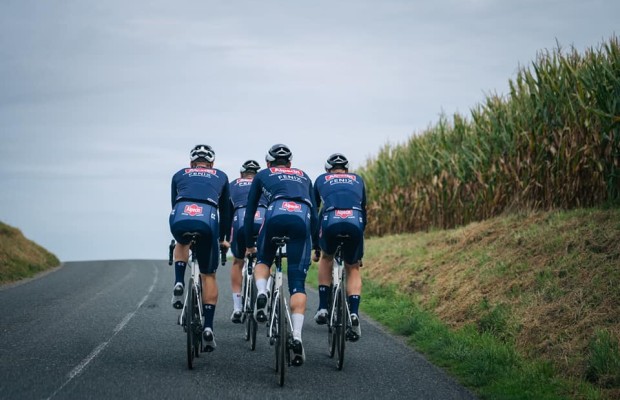How much can one improve in a season?
For years we have heard that cycling is a sport in which progressing to a good level requires years of training, growing from one season to another, and acquiring qualities that make us evolve. However, within the same season, great improvements in level can be achieved simply by going from just pedaling to training in a structured way.

Take the leap in your physical fitness
Cyclists are often not fully aware of how much our physical fitness varies throughout the same season. It is true that in winter, after a small break in the fall, when we resume the habit of pedaling but the weather and limited hours of daylight make it more difficult, we all know that we ride much less than when the change to summer time arrives and we are able to make the most of weekday afternoons pedaling.
However, modern training techniques and metrics used to quantify a cyclist's evolution have allowed us to quantify how much fitness varies over a single season.
RECOMENDADO

Regarding the question with which we started the article, the truth is that there is no single answer since our margin of improvement will vary greatly depending on many parameters such as the years we have been practicing cycling, the type of training we do, our age, or our innate qualities.
Let's start with those more advanced cyclists, who have been training in a planned way for years and compete regularly. For them, the improvement from one year to another will be very limited, even within the same season from winter to their peak form, although there may be a significant difference throughout the season that, with discipline and respecting the training, could mean up to 10% if we talk about one of the main reference measures to establish a cyclist's level such as functional threshold power or FTP.
Those who can notice great changes in the same season are those who are starting in cycling. As we like to say to people who view our sport from the outside, the bike has the advantage that it is very rewarding, and when the fitness level is low, with a little continuity, adaptations occur quickly, especially at the cardiovascular level. That is why many beginner plans focus on creating a habit of riding a bike, gradually increasing the volume. With just that, the cyclist acquires a base that will allow them to progress.

In terms of FTP, different coaches talk about improvements, when starting from a very low level, of up to 20% not in one season but in a few months. This is one of the reasons why cycling is gaining followers at a tremendous pace. In a relatively short time, it is easy to be doing routes of several hours in duration. However, it is also important to remember one of the training maxims: what is gained quickly is lost quickly.
To consolidate these adaptations, it will be necessary to maintain progression and continuity. This is where a planned training, even for someone with a low level, will help establish the foundations that allow progress as a cyclist not only in the same season but to grow from one year to another. This is where it is important to recommend to cyclists not to rush and to grow gradually, establishing a fitness level that the body will keep forever in the long run.
In fact, this is something that those who have had a good level on the bike know well, for whatever reason they have had to stop riding for a season and, when they return, they are able to quickly regain a level close to what they had before.

In summary, cycling allows us to evolve very easily but, if you really want to make a great leap in quality, the answer lies in putting ourselves in the hands of a coach who will provide us with training sessions with a progression suitable for our level, available time, personal constraints, age, etc., and with a proper planning to achieve the best form at the time of year we desire: those bike vacations to explore famous climbs, that cycling event everyone talks about, or simply maintaining a constant level to enjoy group rides without having to be waited for after every climb.





